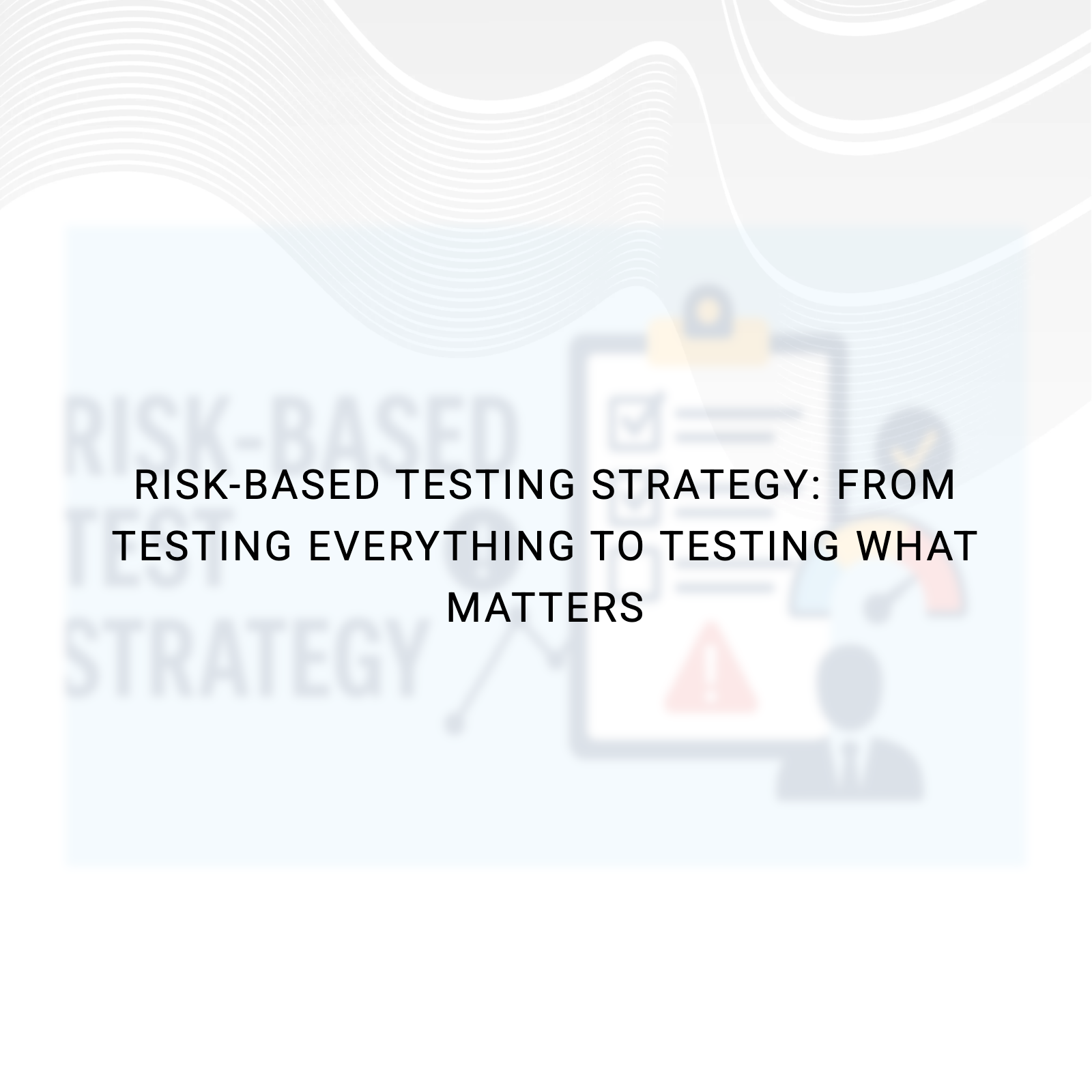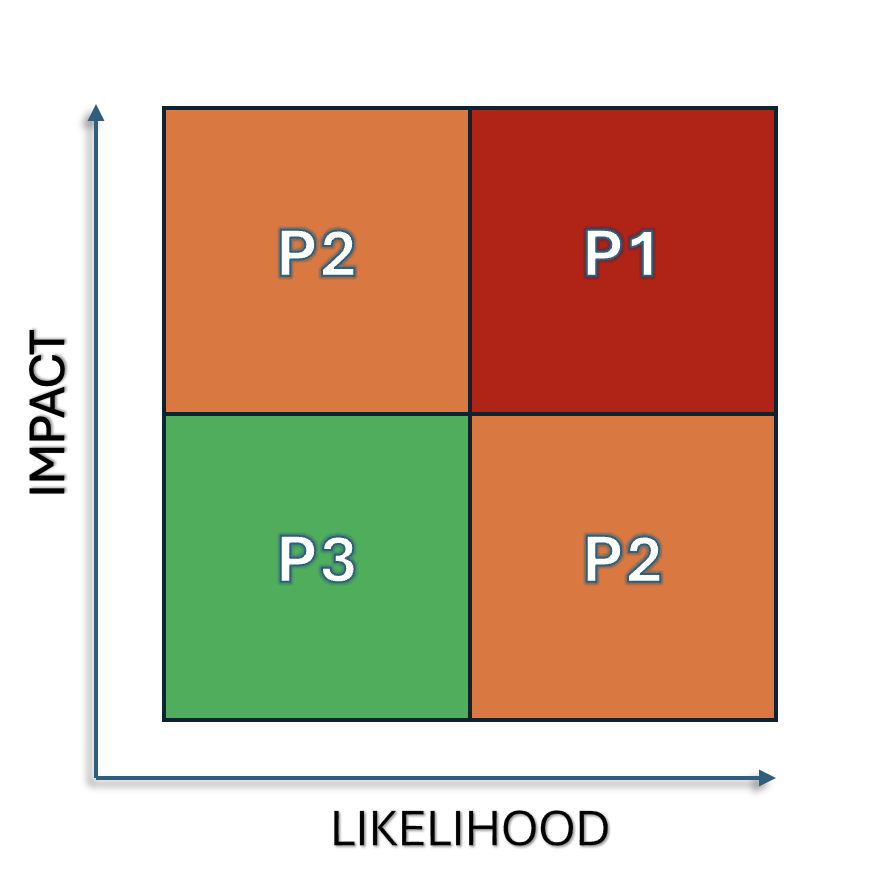Risk-Based Testing Strategy: From Testing Everything to Testing What Matters
Thu Oct 16 2025

Introduction
In today’s competitive digital landscape, maintaining a seamless user experience across multiple platforms and browsers, while keeping up with frequent release cycles, presents a significant challenge. As applications mature, organizations often encounter increasing complexity in testing. The number of platform and browser combinations to be verified becomes a MUST, making it difficult to catch every issue before release. This often leads to production defects, with problems surfacing on one platform but not reproducible on another, and inconsistencies appearing across different browsers.
This blog explores how a scalable, Risk-Based Testing strategy can help organizations manage this complexity and improve testing efficiency.
Redefining Testing: From Coverage to Value
Instead of allocating equal effort across all features, this strategy focuses testing on high-risk areas—the modules that, if they fail, could cause the greatest business disruption or customer dissatisfaction.
The Core Principles Behind the Approach
- Business Value Alignment: Test where the business impact is highest.
- Proportional Test Effort: Allocate time, resources, and tools based on risk levels.
- Continuous Reassessment: Test strategy must be continuously reassessed as risks evolve.
- Team Collaboration: Product Owner, Dev Team and QA collaborate in risk evaluation.
How Risk Translates Into Priority
The core driver of this approach is risk scoring. Each module or feature is evaluated based on two key factors: Likelihood (the probability of failure) and Impact (the business consequence if a failure occurs). Both Likelihood and Impact are rated on a scale from 1 to 5, based on the assessment. The Risk Score is then calculated as the product of these two values.
Based on the Risk Score, testing priorities are assigned as follows:
- P1 - High Priority (Risk Score: 20–25): Requires full test coverage (100%) for the associated modules.
- P2 - Medium Priority (Risk Score: 10–19): Requires moderate test coverage (approximately 60%–80%).
- P3 - Low Priority (Risk Score: 1–9): Requires minimal test coverage (approximately 30%–50%).

To help clarify this strategy, I'll share two real-world examples:
Example 1: A ride-hailing mobile app on iOS and Android:
| Module / Area | Likelihood (1–5) | Impact (1–5) | Risk Score (L×I) | Priority | Reasoning |
|---|---|---|---|---|---|
| User Login & Authentication | 5 | 5 | 25 | P1 | High traffic, sensitive user data, and business-critical entry point. |
| Real-time Ride Tracking (GPS) | 5 | 5 | 25 | P1 | Affects live user experience and driver coordination. |
| Payment Integration (Wallet, UPI, Cards) | 4 | 5 | 20 | P1 | Financial and reputational risk in case of failure. |
| Push Notifications (Driver Arrival, Ride Updates) | 4 | 4 | 16 | P2 | Directly influences operational efficiency and CX. |
| Driver–Rider Chat Feature | 3 | 3 | 9 | P3 | Impacts communication but not system stability. |
| Promo Code & Discounts | 2 | 3 | 6 | P3 | Marketing-related; low technical and business risk. |
| In-App Feedback Submission | 1 | 2 | 2 | P3 | Non-critical; minimal customer impact. |
Testing Focus:
- P1: Full Regression, Performance, and Security testing across both iOS and Android platforms.
- P2: Core Functionality, and Compatibility Testing.
- P3: Exploratory Testing.
Example 2: An E-Commerce Web App on Windows & macOS platforms with multi-browser support:
| Module / Area | Likelihood (1–5) | Impact (1–5) | Risk Score (L×I) | Priority | Reasoning |
|---|---|---|---|---|---|
| Checkout & Payment Gateway | 5 | 5 | 25 | P1 | Core revenue path; any issue directly affects transactions. |
| Add to Cart Functionality | 4 | 5 | 20 | P1 | Frequent usage; impacts shopping flow continuity. |
| Product Search & Filtering | 4 | 4 | 16 | P2 | High likelihood of UI and logic-related issues. |
| User Authentication & Security | 3 | 5 | 15 | P2 | Sensitive customer data; compliance risk. |
| UI Rendering & Responsiveness | 4 | 4 | 16 | P2 | Multi-browser inconsistencies, especially Safari. |
| Email/SMS Order Confirmation | 2 | 3 | 6 | P3 | Post-purchase feature; can be tested in secondary cycles. |
| Recommendation Engine / Personalization | 1 | 2 | 2 | P3 | Enhances UX, not core to purchase flow. |
Testing Focus:
- P1: Execute across all browsers and platforms with end-to-end, performance, and security testing.
- P2: Cover high-traffic browsers (Chrome, Safari) and main OS combinations.
- P3: Perform high-level regression checks.
The Governance That Makes It Work
Risk-based testing isn’t a one-time exercise—it thrives on governance.
- Frequent risk reviews by the leadership and stakeholders to ensure that scoring is consistent and aligned with the business priorities.
- Test Automation to be strengthened strategically in high-risk areas.
- Reports and actionable insights to keep the leadership informed about the risks, not just the defects.
Final Thought: Testing for What Truly Matters
A modern QA function is no longer measured by how many test cases are executed but by how effectively it protects business value and enables faster, safer releases. A Risk-Based Test Strategy elevates QA from being a reactive gatekeeper to becoming a strategic enabler of business resilience. By focusing on what truly matters, teams can deliver quality with precision, efficiency with clarity, and confidence with speed. In a world where change is constant, testing smarter is not a choice; it’s a competitive advantage.

